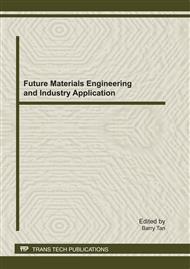p.245
p.252
p.260
p.263
p.267
p.272
p.280
p.287
p.292
Study on Influence Factors of Ammonia Oxidizing Bacterias Removing Nitrogen in Wastewater
Abstract:
The large amount of nitrogen in the water environment had casued the serious deterioration of water environmental quality. Controlling the emissions of nitrogen from producing source to reduce the emission of nitrogenous effluent was an important step for water environment regulation. In this study, laboratory experiments were conducted under anaerobic conditions to translate the ammonia nitrogen and nitrite nitrogen into nitrogen by ammonia oxidizing bacterias. The wastewater used were from a coal liquifaction company of Yunnan in China. The experimenal conditions were controlled as that temperature was 35 °C, pH was 7.9 and hydraulic retention time was 24 h. The experimental results showed the Ammonia oxidizing bacterias had powerful capacity of denitrification from wastewater and removal efficiency of nitrogen is over 90 %.
Info:
Periodical:
Pages:
267-271
Citation:
Online since:
October 2011
Authors:
Price:
Сopyright:
© 2012 Trans Tech Publications Ltd. All Rights Reserved
Share:
Citation:


